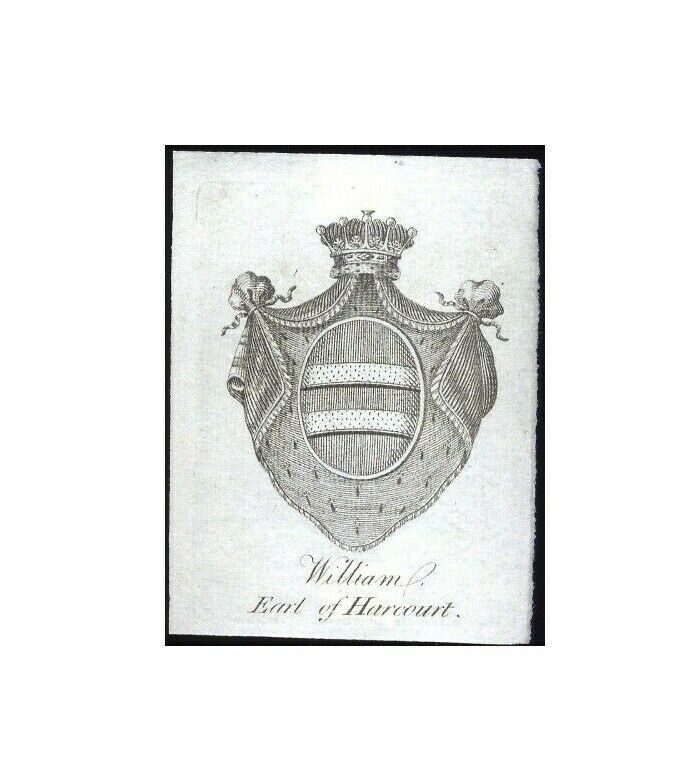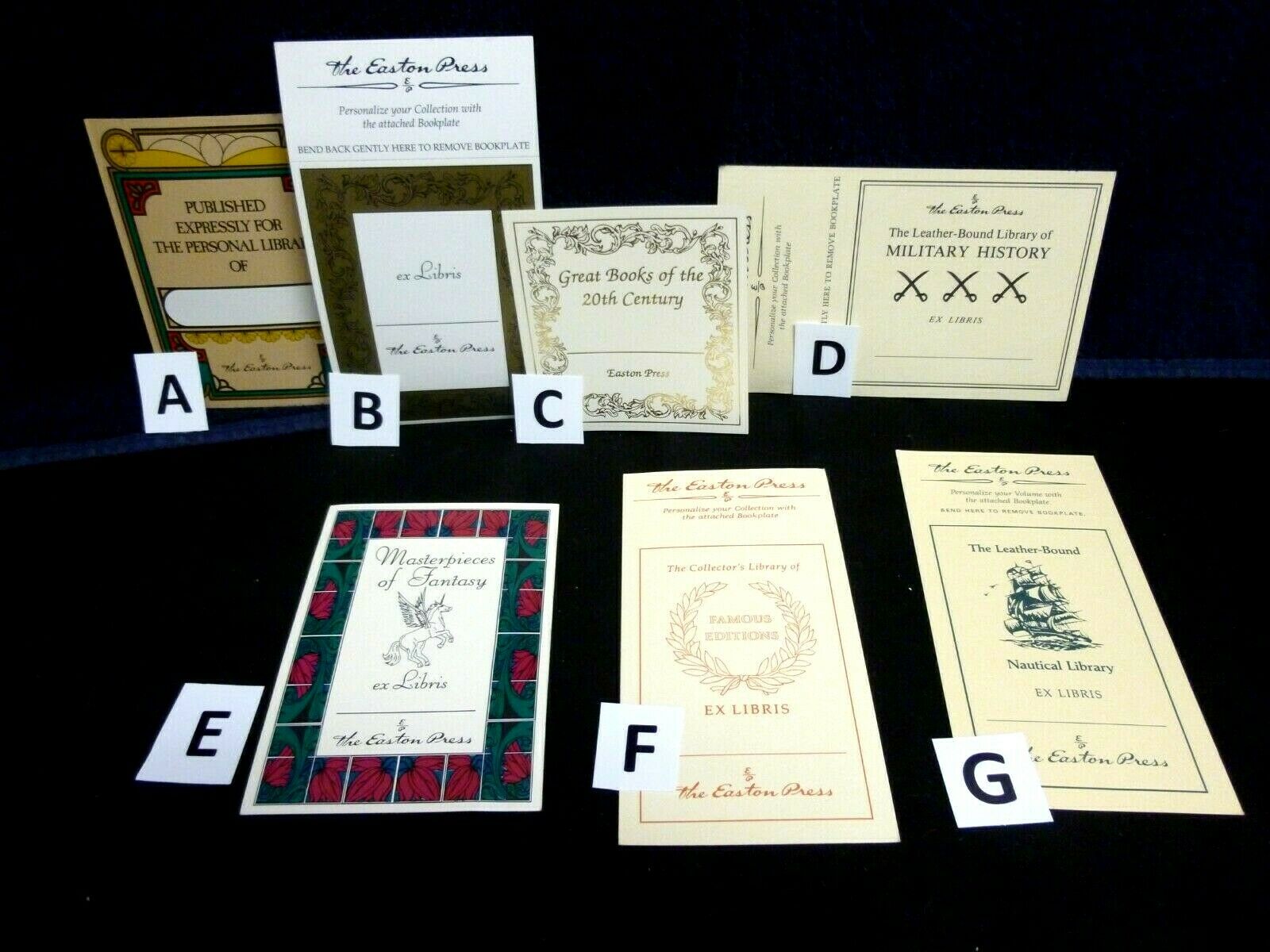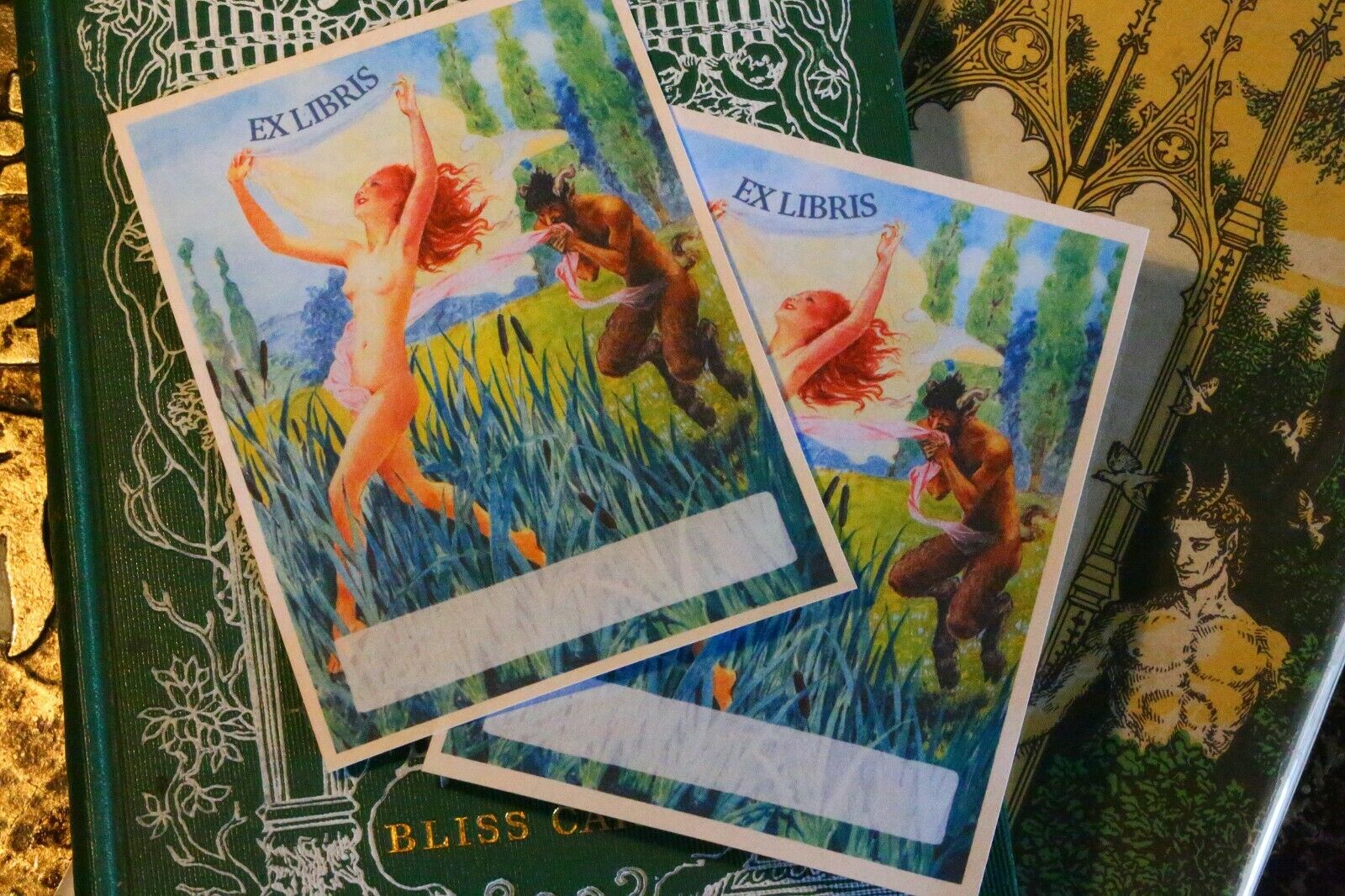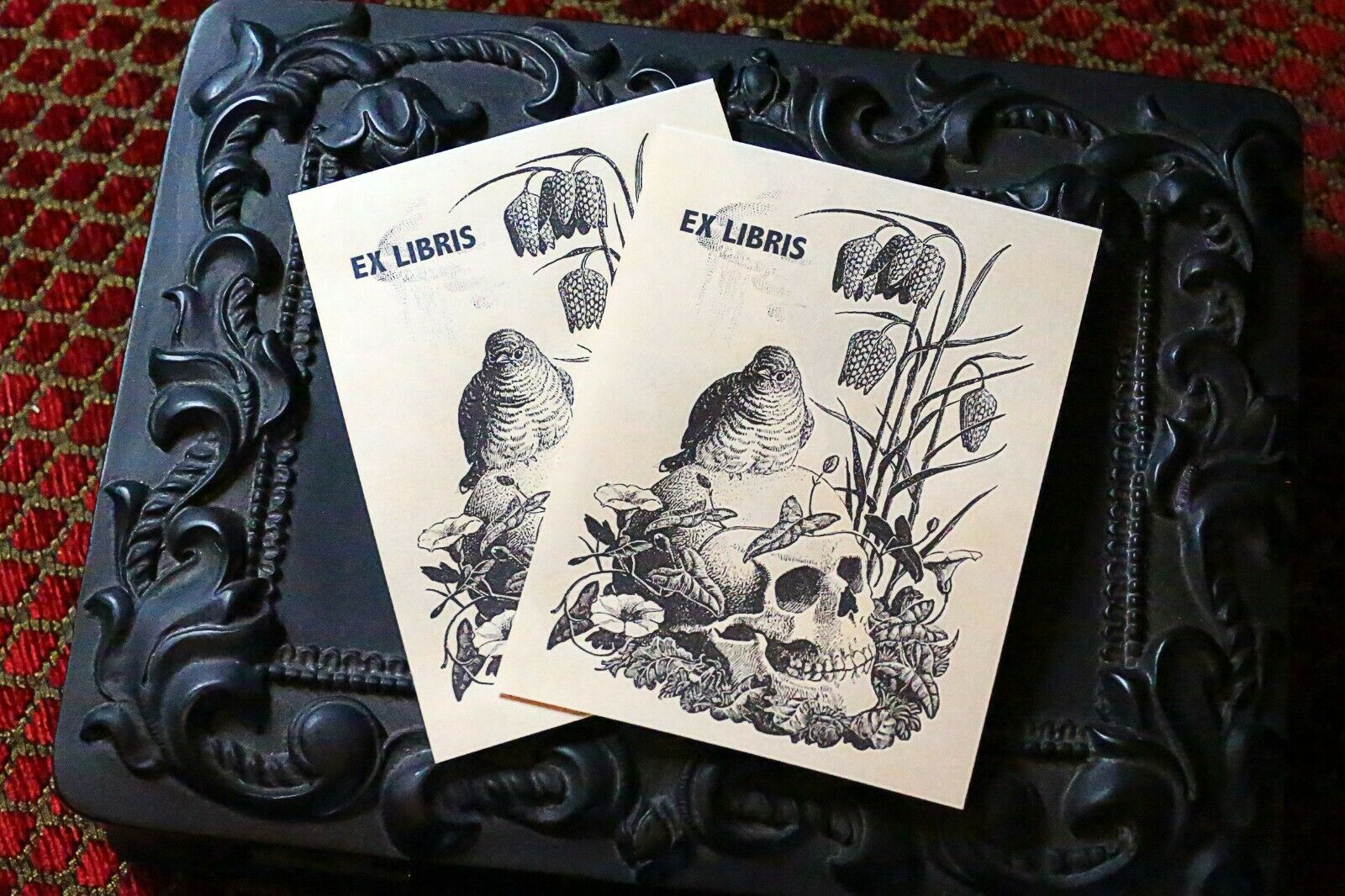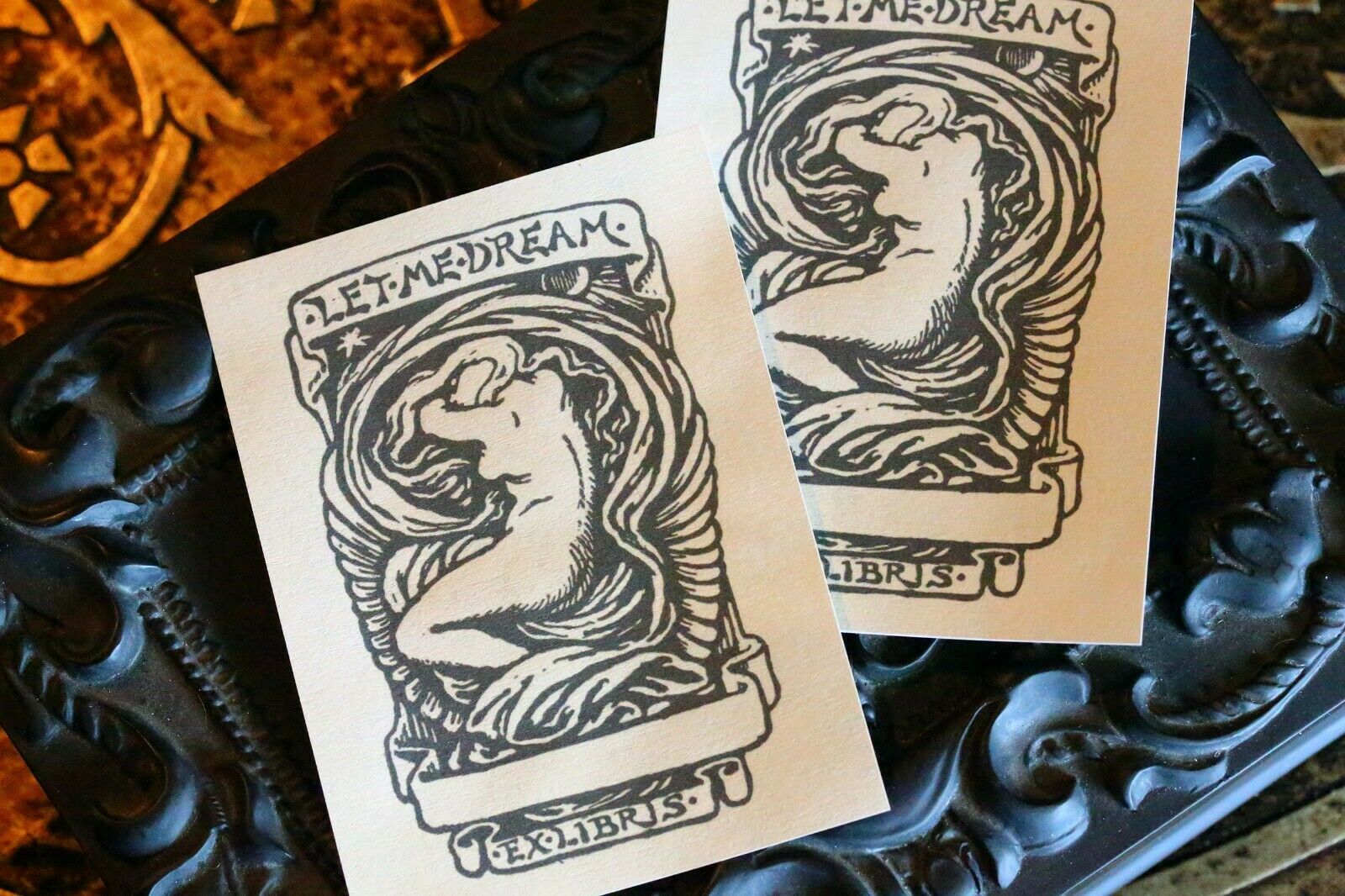-40%
Ex libris armorial bookplate of Field Marshal William, 3rd Earl of Harcourt
$ 39.6
- Description
- Size Guide
Description
Regency Era bookplate from the library of Field Marshal Sir William Harcourt, 3rd
Earl of Harcourt. Good condition, considering its age, with slight fading of the ink, and no visible tears. The photos show the condition of the piece. Sale is just the bookplate, not the frame, which is used for display and to indicate the size
William Harcourt was the last Earl of Harcourt, as he died childless, and his titles became extinct upon his death in 1830.
A brief biography taken from his Wikipedia page:
Born the younger son of Simon Harcourt, 1st Earl Harcourt and Rebecca Harcourt (née Samborne Le Bas), Harcourt was commissioned as an ensign in the First Regiment of Foot Guards on 10 August 1759. He became a captain in the 16th Light Dragoons, a regiment which had been raised at his father's expense and was known as "Harcourt's Black Horse", on 27October 1759. He transferred to the 3rd Dragoons on 30 June 1760 and was subsequently sent to Mecklenburg-Strelitz (with his father) to escort the consort-elect of King George III to England. In recognition of this mission he was appointed an equerry to the Queen Consort later that year.
Harcourt served as an aide-de-camp to Lord Albemarle for the expedition to Havana in 1762 during the Seven Years' War. He was promoted to lieutenant colonel and given command of the 31st Regiment of Foot in November1764, of the 4th Light Dragoons in April 1765 and of the 16th Light Dragoons in June 1768.
In 1766 he was appointed a Groom of the Bedchamber to King George III, a post he held until 1808, when he was made Master of the Robes until 1809, after which he was Master of the Horse to the Queen until 1818. He also sat in Parliament as Member of Parliament for Oxford from 1768 to 1774.
He commanded the 16th Light Dragoons at the Battle of White Plains in October 1776 and then captured General Charles Lee at Basking Ridge in December 1776 during the American Revolutionary War. Promoted to colonel on29 August 1777, he became aide-de-camp to the King in September 1777 and honorary colonel of the 16th Light Dragoons in October 1779. He bought St Leonard's Hill in Clewer from the Duke of Gloucester in 1781 and, having been promoted to major-general on 20 November 1782, he was then appointed DeputyRanger of Windsor Great Park.
Promoted to lieutenant-general on 18 October 1793, Harcourt commanded the British Cavalry at the Battle of Willems in May 1794 during the Flanders Campaign. Appointed Governor of Fort William on 21 March 1794, he succeeded the Duke of York as commander during the Flanders Campaign and oversaw the British retreat and their final evacuation from Bremen in Spring1795. On his return he was appointed Governor of Kingston-upon-Hull.
Harcourt was promoted to full general on 1 January 1798 andhe became the first Governor of the Royal Military College at Great Marlow inJune 1801. Appointed a Deputy Lieutenant of Berkshire in November 1801, hesucceeded his elder brother, George Simon Harcourt, 2nd Earl Harcourt, to theearldom in April 1809 and was appointed Governor of Portsmouth in July 1811. Appointeda Knight Grand Cross of the Order of the Bath on 20 May 1820 and promoted tofield marshal on 17 July 1821, Harcourt bore the Union standard at thecoronation of George IV on 19 July 1821. He went on to become Governor ofPlymouth in 1827.
Harcourt died at St Leonard's Hill on 17 June1830 and was buried at Stanton Harcourt in Oxfordshire. The estates passed to acousin, Edward Vernon, who was Archbishop of York; on inheriting the estatesVernon changed his name to Harcourt. Statues of Lord Harcourt were commissionedfrom Robert William Sievier and erected at St Michael's Church in StantonHarcourt and in St George's Chapel, Windsor Castle.
